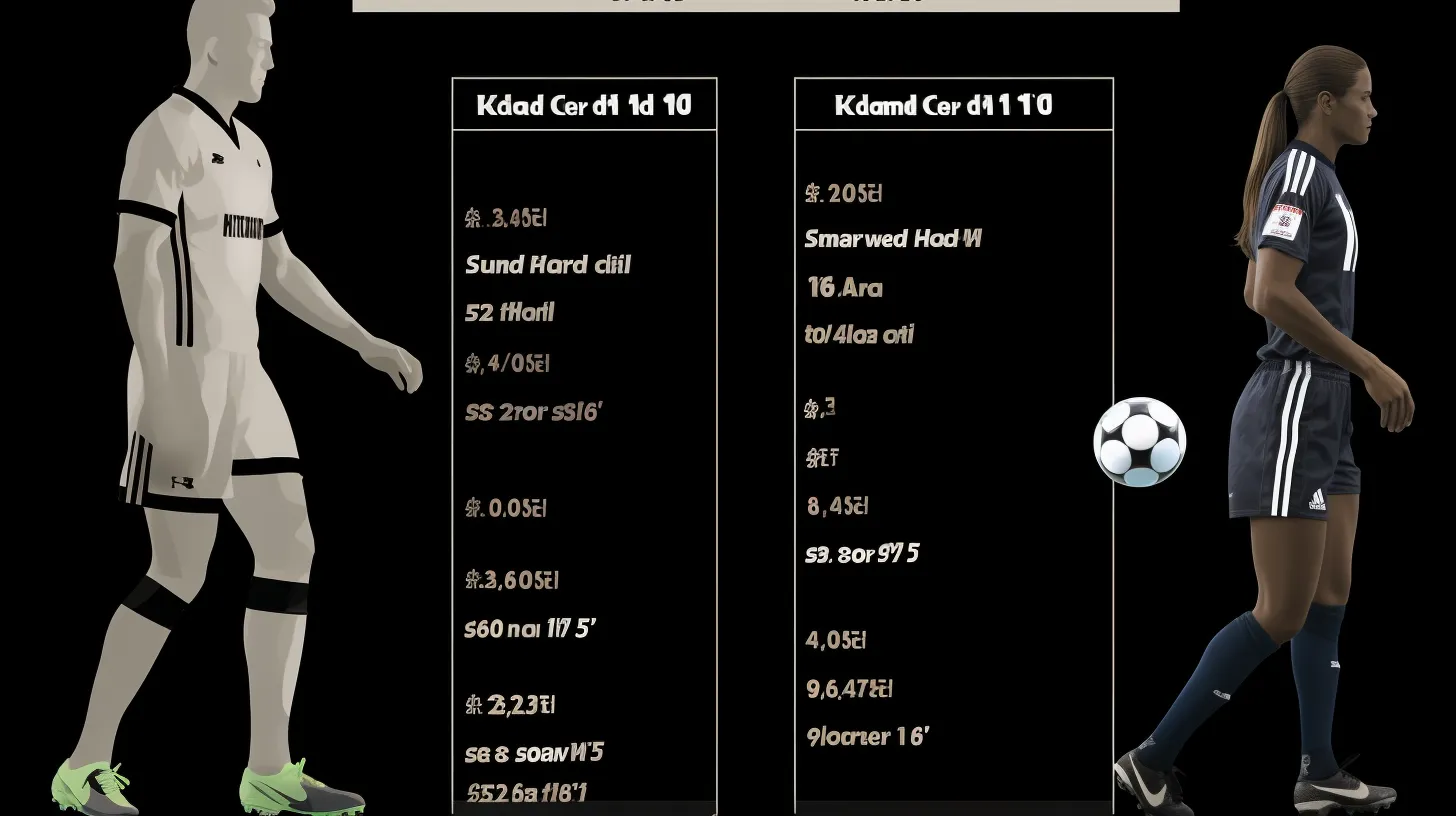Curious about the average height of soccer players?
Well, let’s take a closer look at the heights of soccer players.
The world of soccer heights is quite intriguing, especially when considering how a player’s position and level of play can impact their height. Whether it’s towering goalkeepers or nimble forwards, there’s a wide range of heights to explore.
However, it’s important to note that height isn’t the sole determining factor in soccer. Skills, technique, and tactical intelligence also play significant roles, particularly at the professional level.
So, let’s lace up and delve into the fascinating world of soccer player heights!
Global Average Height of Soccer Players
You might wonder how the global average height of soccer players compares to regional averages.
Well, the average height of successful soccer players worldwide hovers around 5 feet 11 inches for men and 5 feet 6 inches for women. Professional soccer players in top leagues like the English Premier League and La Liga typically range from 5 feet 9 inches to 6 feet.
It’s intriguing to note that the position also plays a role in height differences. Goalkeepers tend to be the tallest, standing at around 6 feet 2 inches to 6 feet 5 inches, while defenders and midfielders fall somewhere in between. Forwards, on the other hand, are generally the shortest.
Despite this, height isn’t the only factor that determines success in soccer, as skill and tactical awareness are equally crucial.
Positional Height Variations

Positional height variations in soccer players significantly impact their performance on the field.
For professional defenders, being taller, with an average height of 5 feet 11 inches to 6 feet 2 inches, provides the physical presence and aerial ability crucial for excelling in defensive roles. This allows them to dominate in aerial duels and effectively challenge opponents.
On the other hand, forwards, with an average height of 5 feet 7 inches to 5 feet 9 inches, benefit from a lower center of gravity, enabling greater speed, acceleration, and ball control. As a result, shorter players can maneuver more swiftly and skillfully.
Understanding these positional height variations is essential in team strategy and player selection, as it directly influences the dynamics and effectiveness of different positions on the soccer field.
Impact of Height on Player Performance

Discussing the impact of height on player performance involves analyzing key factors influencing players’ abilities and contributions on the field.
The average height of professional soccer players varies between male and female players, with male professionals generally being taller than their female counterparts.
It’s important to remember that while height can offer advantages in specific aspects of the game, such as aerial duels and reaching high shots, success in soccer isn’t solely determined by height.
A player’s ability to control the ball, speed, agility, and overall teamwork also significantly influence their performance.
Shorter players like Lionel Messi demonstrate that height doesn’t limit exceptional ball control and explosive speed.
Therefore, while height matters in certain situations, it’s essential to recognize the multifaceted nature of a player’s overall performance.
Gender Differences in Soccer Player Heights

Gender disparities in soccer player height manifest as distinct average height differentials between male and female athletes. On average, male professional soccer players are taller, standing at around 5 feet 11 inches, while female soccer players have an average height of approximately 5 feet 6 inches.
However, it’s important to note that height isn’t the sole determinant of success in soccer. While taller players may have advantages in certain positions, such as goalkeepers, shorter players have their own advantages, like agility and speed, which are crucial for midfielders and forwards.
It’s essential to understand that both male and female soccer players tend to excel based on various skills, techniques, and tactical understanding rather than height alone. As a soccer enthusiast, I appreciate the diverse strengths and abilities of players, regardless of their height, which adds to the richness of the sport.
Factors Influencing Soccer Player Height

Factors influencing soccer player height include genetics, nutrition, training, and environmental conditions. Genetics play a significant role in determining an individual player’s height, as it can influence their natural physical attributes.
Nutrition and training also impact a player’s growth and development, with proper nutrition and targeted training potentially contributing to achieving their maximum height potential.
Environmental conditions, such as access to healthcare and overall living standards, can also influence height.
At the professional level, different football clubs may have varying height requirements for players based on their positions.
While height can provide advantages in certain aspects of the game, including aerial ability for defenders and goalkeepers, it’s essential to remember that technical ability, skill, and tactical awareness are equally crucial for success in soccer.
Therefore, while height may play a role, it’s not the sole determining factor for a player’s ability.
